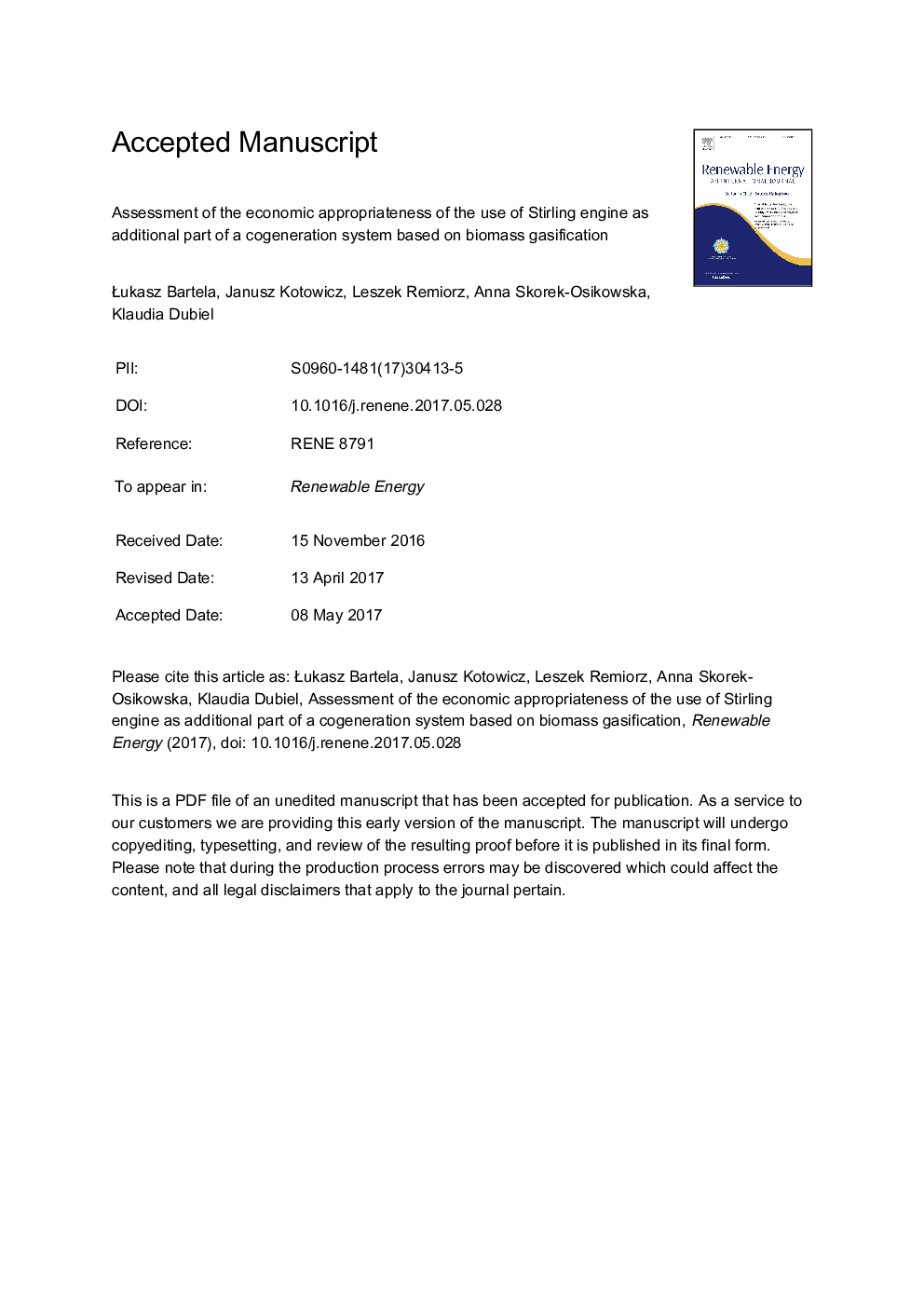| Article ID | Journal | Published Year | Pages | File Type |
|---|---|---|---|---|
| 4926142 | Renewable Energy | 2017 | 71 Pages |
Abstract
This paper presents the results of analyses of two variants of a cogeneration system based on a biomass gasification process. The first variant is a classic system, where electricity is generated in a piston engine and the useful heat is obtained within the piston engine and in the raw process gas cooler. Due to the high ratio of the generated thermal power to electric power, this is an attractive variant, especially when there is a high and constant heat demand. The second analyzed variant assumes the additionally use a Stirling engine, which uses the high-temperature potential of the raw process gas to increase the electric power of system. Both variants were evaluated under variable market shares of two types of heat consumers: municipal and industrial users. Additionally, in the case of the system with the Stirling engine, the impact of a change in the degree of cooling of the process gas, which is realized within the Stirling engine, was examined. To determine the efficiency of the engine as a function of the degree of cooling, numerical model of a unit was created. System analyses enabled the determination of the characteristics of the thermodynamic and economic assessment indicators for both variants.
Related Topics
Physical Sciences and Engineering
Energy
Renewable Energy, Sustainability and the Environment
Authors
Åukasz Bartela, Janusz Kotowicz, Leszek Remiorz, Anna Skorek-Osikowska, Klaudia Dubiel,
